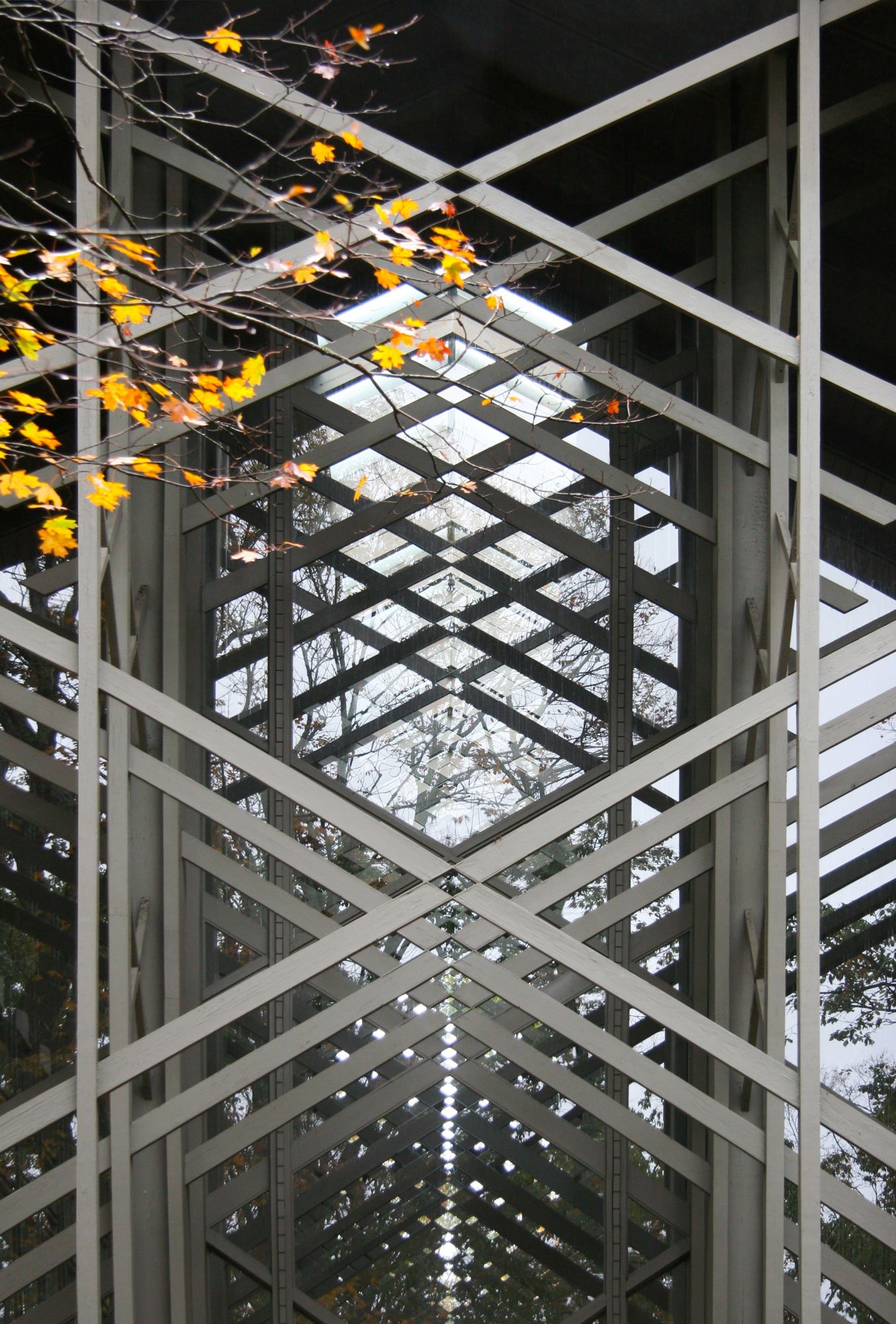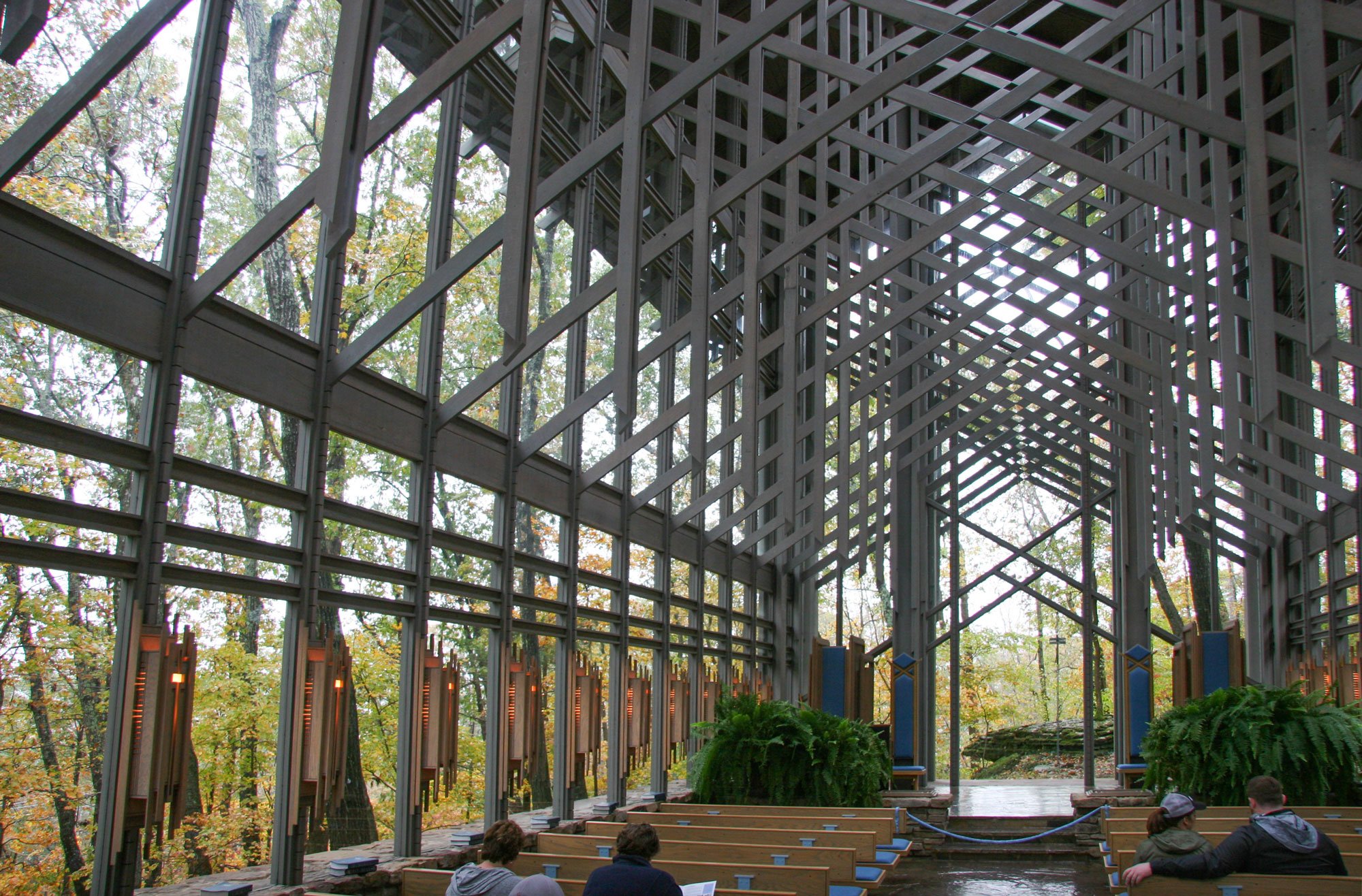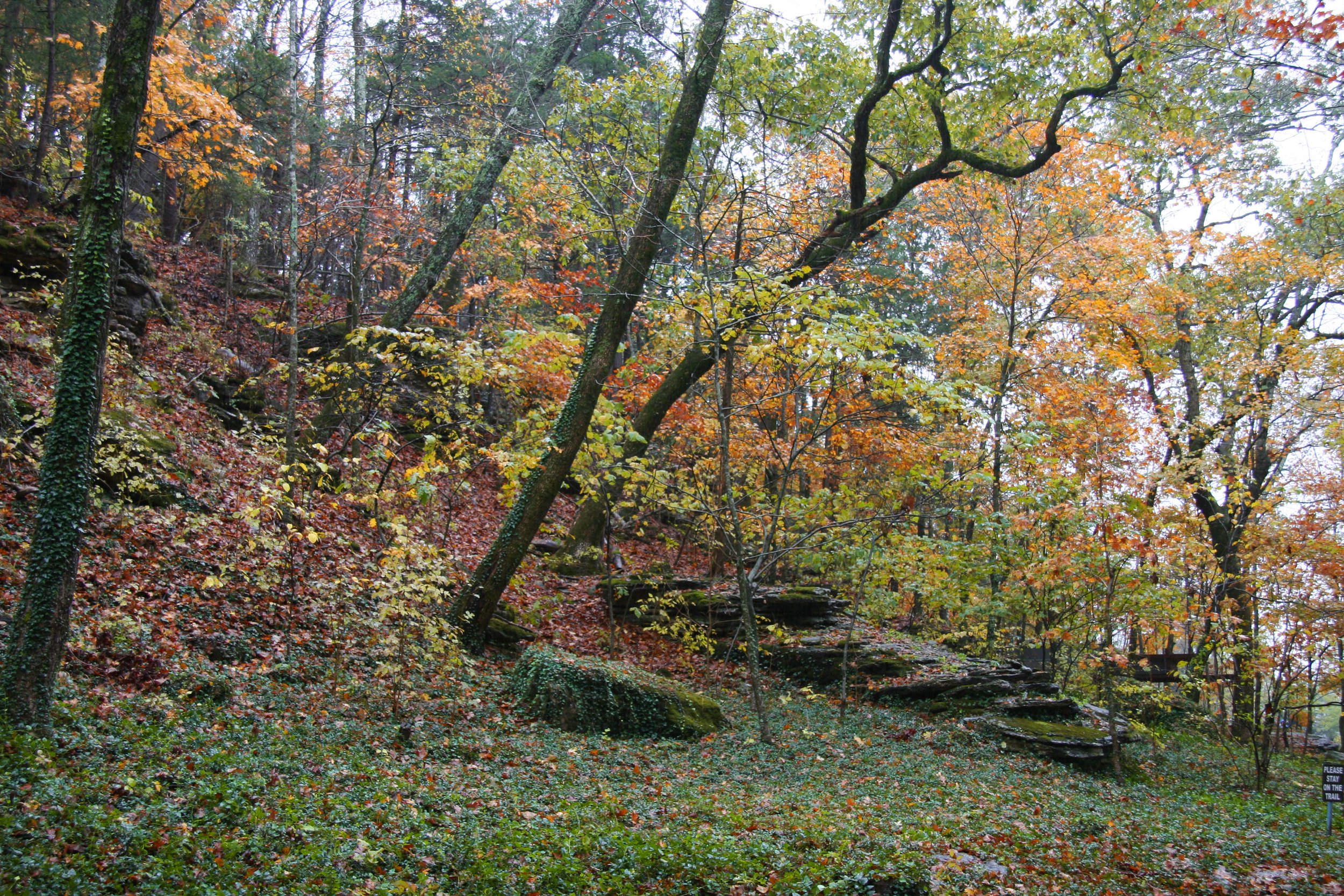Musings on the Thorncrown Chapel and its architecture
In my 30 years of experiencing the built environment, there are no structures that I have visited where I have felt more compelled to delay my entry and marvel at its exterior façade as much as I did when I visited the Thorncrown Chapel, located in the Ozark hills just outside of Eureka Springs in Arkansas.
It was a rainy Sunday morning in the fall of 2017 when I was fortunate enough to visit this mystical sanctuary with my parents and my grandmother as we attended a church service. While en route to the chapel, we were driving within and around the rolling hills along the West Leatherwood Creek. During this time, I found myself enchanted by the beauty of the deciduous autumn leaves in full bloom, bringing much needed warmth and texture into an otherwise gloomy overcast sky. After meandering through this landscape for just enough time to take it all in, we finally made our ascent up a small hill to reach our much-anticipated destination.
We were greeted by a wet and winding flagstone path that frolicked through the woods much like a fairy tale. The rain could be heard falling onto the walkway and the leaves overhead as the birds chirped nature’s symphonies amongst each other. The red, orange, yellow, and green of the leaves played among the branches and the earth below. As we ventured on, we finally caught sight of the chapel standing pronounced within its landscape like a lighthouse amidst a cliff, yet still appearing to belong to it.
Designed by one of Frank Lloyd Wright’s protégé’s, E. Fay Jones, this 48’ tall Gothic timber cathedral is a true expression of vernacular architecture. In plan, this organic building is very simple like any other chapel. In section and elevation, it is very sophisticated and complex.
The intricately detailed stick-framed construction compliments its woodland surroundings with its slenderness, color and texture. The native flagstone floor and foundation balances with the light and transparent structure above, grounding it to its site while creating a contrast between heavy and light. The skeletal wood framing and the large glass enclosure blurs the relationship between the indoors and outdoors, linking you directly to nature while providing you with an assortment of light, color, shadows, and views of every season, every day, and every hour that you visit. Between the glass exterior walls and a vaulted skylight ceiling spanning the entire length of the nave, direct and indirect daylight enters the space from all 6 planes that make up the building envelope. Similar to the Pantheon in Rome, this ever-changing chapel presents a different psychological experience every time that you visit.
As stated by the renowned architect Louis Sullivan, “form follows function.” When you are present in this space you can tell that it is a heavenly building without seeing a cross, a bible, or any other tangible item that is associated with a higher power. This structure puts God’s creation on display. Whether spiritual or not, you feel moved by something greater as you embrace the environment through all of your awakened and now heightened senses. Visually, you find yourself wondering if you are outside or in as you gaze up at the floating wood trussed ceiling overhead standing tall among the trees, as light and air moves its way between each diagonal member. Acoustically, the sounds of a chorus reverberate off of the hard stone floor and project upwards towards the skylit ceiling joining the sounds of nature on its exterior. The smell of wet earth and fall rain are welcomed through the solid wood double doors as they linger into the main space from the entry vestibule.
After what seemed like only a brief moment, the service that we attended was over and it was time to return back to reality. Exiting the Thorncrown Chapel, I felt renewed and re-energized after our enlightening experience. Being a lifelong student of architecture, I took away lessons that can be applied toward my own professional practice. I was reminded of my primal being and the importance of reconnecting my mind, body and spirit back towards nature, even from within the built environment. The value of the earth grounds us, supports us, and keeps us warm. The sky gives us life, emotions, and its many valuable nutrients. The woods provide protection and privacy from any and all existential threats that can harm us. These three ingredients are present in every architectural recipe. It is up to each architect to choose whether to embrace the natural environment or to ignore it. At the Thorncrown Chapel, E. Fay Jones effortlessly connects us to the sky with over 6000 square feet of glass and skylights. He connects us to the earth with the heavy organic native flagstone sourced locally from the Ozark hills. And finally, he connects us back to nature by mimicking it with the slender timber trusses and exoskeleton that allow us to see nature, hear nature, smell nature, and thus, be brought back to it.
by Ethan Moulder
Architect-in-Training at Dubbe Moulder Architects





